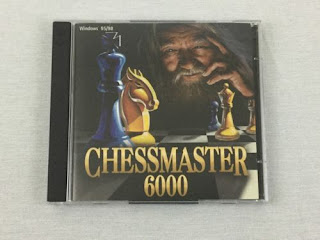This is part 3 of a series, if you are just joining in be sure to start at
part 1!
Nature is weird, and full of constant surprises.There are a lot of things in nature that we still don't understand.Take for example these thousands of circles in the Kalahari desert:
 |
| Source: Africa, Netflix |
We don't know what causes them...Scientists have suggested numerous options - but ruled all of them out - including poisonous plants, insects, and magnetism. There is so much about our planet that is outside of our understanding, and so much to draw inspiration from.
 |
| Source: Bill Nye the Science Guy |
People think science is pretty cool, that's why we have a large chunk of the entertainment industry using science to draw in their audience. As game developers, we can use that fascination to our advantage, to get our players excited.
 |
| Source: Niche, Game |
I've been playing a game recently called Niche where the player controls a herd of animals and tries to help them survive. The game does some really interesting things with reproduction and genetics, allowing the player to alter the chances of certain traits, and choosing which animals will mate with each other. This game does a really great job of taking elements of nature and science that people find fascinating, and then turning those elements into engaging gameplay mechanics.
 |
| Source: Factorio, Game |
Another game that I think does a great job with this is Factorio. In Factorio, the player plays as a character stranded on an alien planet, and the player needs to collect resources to build a rocket to get off the planet. A lot of the resources can't be used as raw materials, so the player builds a lot of different kinds of processing plants, essentially creating an entire factory from scratch. But the alien species living on the planet does not want to see their beautiful planet destroyed by pollution and over-harvesting. The more the player builds and expands, the more of the natural planet gets destroyed, and the angrier the aliens become. The aliens will attack the player and the base, because they are defending their planet. I really like the way this game makes you think about how your actions are impacting nature, and finding more sustainable and less invasive ways to do things is more challenging but helps keep you at peace with the creatures inhabiting the planet.

I've design characters and AI for a handful of games, and I've learned a few lessons from the process. Instinctively, it might seem that character design, combat, and behavior are all distinct design challenges that can be handled independently, but I've found that when it comes to the player interacting with the characters, these three things are very tightly intertwined, and they deserve to be designed together. There are games that have characters that just
make sense because their character design feels perfectly aligned with their AI behavior, and the transition from behavior to combat seems completely natural and expected for how that character is perceived. On the other hand, I'm sure we've all played games where a character feels out of place, their behavior does not make sense for what that creature is, and the transition to combat feels clunky and unexpected.
I personally have fallen into this trap, and I'd like to think that I learned from my mistakes, and hopefully you can too. The very first game I worked on where I designed the AI and combat was a co-op exergame where two players work together to defeat giant robot spiders in an underground subway system.
We spent a lot of time designing and researching the exercise portion, and not a lot of time thinking about our enemies. We knew we needed something that would be immediately recognized as evil, we needed the player to be able to attack from a distance, and we wanted the enemies to swarm the player. A couple of interesting things that came from our design was that the spiders would come out of webs in the corners, so players could predict where they would come from, and some spiders could attack from a distance by spitting sticky webs at the player to temporarily trap them.
This project was over 5 years ago. I was the lead designer on this project so I was responsible for designing engaging enemies, but it was my first time designing anything related to AI, so I treated the character design, AI behavior, and combat completely separately, because I didn't know any better. I took the easy route - enemies were mainly different in their health and how much damage they could do, with the exception of the web-spitting spiders, and the only distinction for the boss was that she was huge and much stronger than the little minions, but no interesting differences and no narrative reason why there was one enormous spider surrounded by a horde tiny spiders.
Why are they
robot spiders? What made them? The spiders are pretty scary, but their creator is probably pretty terrifying. Why are they attacking the player? Blood lust? Or are they defending their nest? Perhaps seeing a mother spider with an egg sac could help shed some light on their behavior. If I could go back and do it again, I would begin by considering why are these characters here, and what is their incentive to attack the player. I would also draw inspiration from nature to come up with more interesting behavior instead of
run in and attack.
 |
| Source: The Hunt, Netflix |
Spiders are bizarre but highly specialized hunters, with unique features and behavior adapted to any environment they live in.
 |
| Source: The Hunt, Netflix |
This is a Portia Spider hunting another spider by dropping down on it from above. The Portia Spider specializes in hunting other spiders, so rather than building her own web she goes out on the hunt.
 |
| Source: The Hunt, Netflix |
This is a Spitting Spider that shoots poison out of its mouth at its prey. And this Spitting Spider could end up being a meal for Portia.
 |
| Source: Africa, Netflix |
And here is a spider that is
cartwheeling down a hill to escape a predator. Spiders are an amazing example of how their actual behavior in nature is probably more profound and well-designed than anything we could come up with when brainstorming a spider-based character for a video game. This world has wonders and terrors beyond our wildest imagination.
 |
Source: Image By Jon Richfield
|
If you are concerned that spiders are just not large enough in real life to inflict the kind of terror you are looking for, then allow me to present to you the Huntsman spider which can get up to one foot in diameter, and can move nearly a meter per second. That sounds pretty terrifying to me.
In part 4 I'm going to talk about modes of hunting (and avoiding being hunted) that can be found in nature.














































